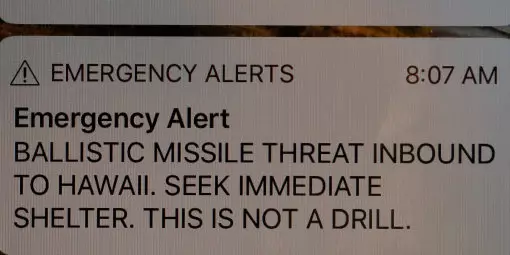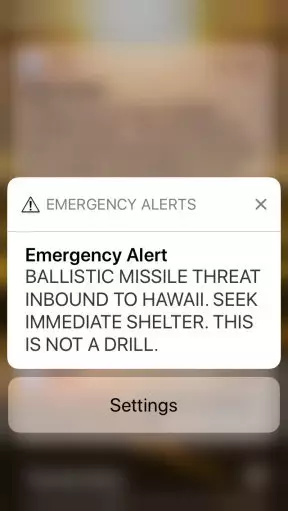
The employee who petrified hundreds of thousands of people by issuing a false missile alert to the US state of Hawaii genuinely thought the state was under attack, it has been revealed.
At 8.07am on 13 January, an unidentified staff member of the Hawaii Emergency Management Agency (HEMA) sent out a mobile phone alert that went uncorrected for 38 minutes, leaving people across the state fearing for their lives.
It's for the best that no one knows who they are, to be honest - they're probably still cringing in embarrassment.
Advert
RECAP HAWAII GOVERNOR DAVID IGE'S APOLOGY FOR THE ALERT BELOW:
Now the US Federal Communications Commission (FCC), which has been investigating the mistake, has revealed that the employee was taking part in an emergency drill but got confused by its wording and pressed the panic button for real.
In its preliminary report of the incident, the FCC said that part of the call the staff member heard 'did not follow the Hawaii Emergency Management Agency's standard operating procedures'.
Advert
"Instead, the recording included language scripted for use in an Emergency Alert System message for an actual live ballistic missile alert. It thus included the sentence "this is not a drill'," the report reads.
"The recording ended by saying again, 'exercise, exercise, exercise.' Three on-duty warning officers in the agency's watch center received this message, simulating a call from U.S. Pacific Command on speakerphone."
Because they'd heard the words 'this is not a drill' but not the following 'exercise, exercise, exercise', the employee pressed the button and believed they'd acted correctly until the alert appeared on their colleagues' phones. Oops.

HEMA was forced to make an almighty scramble to tell people the alert was false, correcting the mistake on Twitter within 12 minutes. However, by that point the damage was done and it took until 8.45am for staff to send out a second all-OK alert.
Advert
The FCC said that it took so long for HEMA to issue the correction because the proper procedure to do so wasn't in place.
Due to the wording of the drill, the FCC has not blamed the employee for the incident and they remain in post at HEMA. However, they no longer have access to the missile alert system.
At the time, Hawaii's Governor David Ige apologised profusely for the confusion, believing that the employee had pressed the wrong button by accident while staff were changing between night and day shifts.
"I am sorry for the pain and confusion it caused. I, too, am extremely upset about this and am doing everything I can do to immediately improve our emergency management systems, procedures and staffing," he said.

In addition to the phone alert, radio and TV networks also sounded the alarm, telling viewers and listeners to seek immediate shelter and remain well away from windows.
Advert
The alert would have been particularly scary for Hawaiians due to recent missile tests carried out by North Korea, some of which were potentially strong enough to reach Hawaii.
The FCC said that HEMA has 'already taken steps' to prevent a repeat of the incident. Its final report will be released in due course.
Featured Image Credit: PATopics: News, Interesting, US News